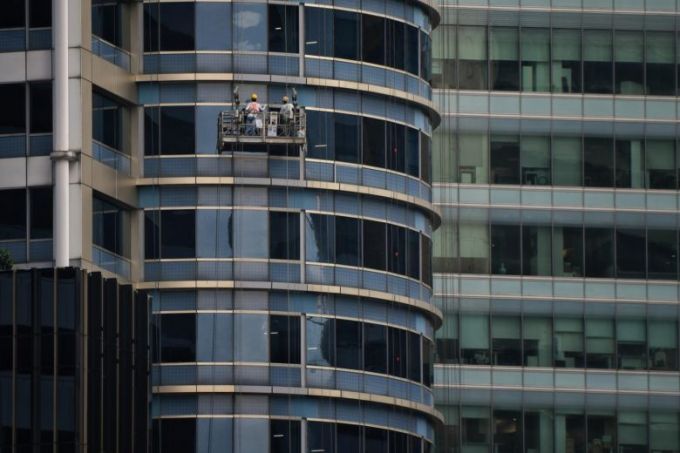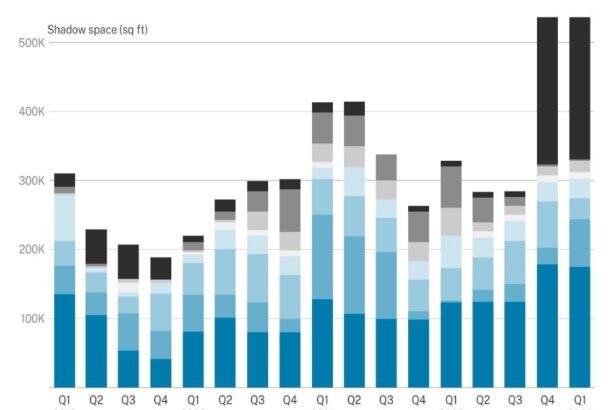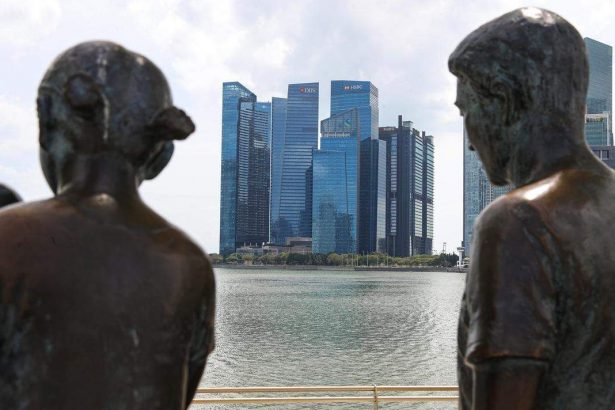THE pandemic took its toll on office rents in the third quarter as souring business sentiment and a weaker labour market prompted rentals of office space to decline 4.5 per cent quarter-on-quarter for the Central Region after holding steady in the previous quarter.
Analysts said that more occupiers sought to right-size and cut costs by scaling back on some or all their space as leases came up for renewal, while landlords had to lower rents more aggressively to find replacement tenants.
With working from home still the default, office space is also under-utilised, said Christine Li, head of research, (Singapore and Southeast Asia) for Cushman & Wakefield.
Real estate consultancy JLL estimates that the average monthly gross effective rents for Grade A CBD office space came down by 3.8 per cent quarter-on-quarter to S$10.08 per square foot (sq ft) in Q3, accelerating from a 3 per cent decline in Q2.
Demand for office space continued to moderate amid a bleak employment outlook, said CBRE’s head of research (South-east Asia) Desmond Sim. “Cost efficiency continued to be the main driver for leasing enquiries as tenants across an array of industries continued to downsize, either through renewals or relocations.”
On the other hand, prices for office space in the Central Region space fared better, edging up 0.2 per cent after declining 4.3 per cent in the previous quarter, figures released by the Urban Redevelopment Authority (URA) on Friday showed. This was due to the central area, which saw a 1 per cent increase quarter-on-quarter, while the price of offices in the fringe eased 4.4 per cent.
There were two record price transactions for the quarter under review, said JLL’s head of research and consultancy, Tay Huey Ying. These were the proposed divestment of Robinson Point by Tuan Sing for S$500 million, and a high-floor strata-titled unit at Suntec Tower 1 which was acquired at S$10.6 million. The former works out to S$3,736 per sq ft of net lettable area (NLA) and the latter, S$3,443 per sq ft of strata area.
With low interest rates, Ms Li suggested that office owners are also not willing to divest assets at sizeable discounts, even though valuations may have declined on the back of lower rental income.
She added: “The divergent trend between rising prices and declining rents could continue for a while longer in the current low interest rate environment before reality sets in.”
However, she expects it is only a matter of time before prices eventually head south.
Islandwide, as at the end of the third quarter of 2020, there was a total supply of about 767,000 square metres (sq m) gross floor area (GFA) of office space in the pipeline, compared with 668,000 sq m GFA at the end of the previous quarter.
The amount of occupied office space decreased by 19,000 sq m of net lettable area (NLA) in Q3, versus a bigger drop of 55,000 sq m in Q2.
The stock of office space declined by 33,000 sq m NLA in Q3, compared with an increase of 43,000 sq m in the previous quarter.
As a result, the islandwide vacancy rate of office space edged down to 12 per cent at the end of Q3, from 12.1 per cent at the end of Q2. Occupancy was supported by displaced occupiers from the redevelopment of commercial buildings such as Shaw Tower, Keppel Towers, AXA Tower and Fuji Xerox Towers, said Leonard Tay, head of research for Knight Frank Singapore.
“(Persisting) weakness in the labour market…will translate to the continued decline in office space demand in the near term,” said Mr Tay. “Given the challenges, office landlords are willing to lower rental expectations, in order to keep their buildings occupied, knowing the difficulties tenants are facing.”
Knight Frank estimates that office rents could contract in the double digits this year, albeit on the lower end of a projected 10-15 per cent range, but should decline by a smaller 5-10 per cent next year.
But despite the economic headwinds, it’s not all doom and gloom. For one, Chinese tech firms such as ByteDance and Tencent are looking to expand in Singapore amid rising geopolitical tensions, which will lend support to the commercial market.
Incoming supply poised for 2022 has also been spread out as a result of disruption to construction activities stemming from the pandemic. Cushman & Wakefield said the amount of office space due in 2022 now works out to 36,000 sq m, down sharply from 250,000 sq m previously.
By Nisha Ramchandani, The Business Times/ 24-Oct-2020



